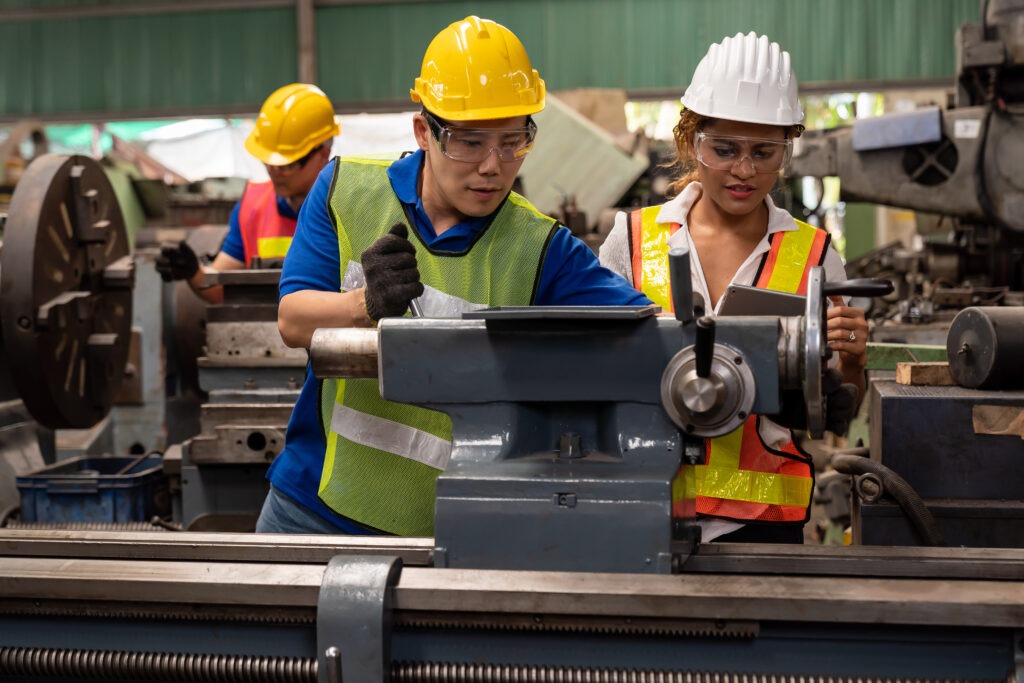Carpenter job description - What exactly does a carpenter do?
The job description of a carpenter or joiner is more than just planing and sawing - it is full of creativity and interesting challenges as well as precision craftsmanship. It's definitely fun for anyone who enjoys working with their hands. As a carpenter you create unique furniture,beautiful individual doors and tailor-made windows made of wood and modern wood-based materials. Whether it's a cozy workshop or the hustle and bustle of a construction site, the workplace is diverse and varied. In addition to manual skills, technical understanding, an eye for detail and creativity are essential. Thanks to modern technologies such as CNC-controlled machines The traditional craft is constantly evolving and offers exciting new opportunities.
Table of contents
- Carpenter job description - What exactly does a carpenter do?
- How do I become a carpenter? Requirements and skills
- How does the carpentry apprenticeship work?- Duration, content and procedure
- Carpenter salary - What does a carpenter earn during training and afterwards?
- What further training opportunities are there for carpenters?
- Carpenter vs. joiner - what's the difference?
- What are career opportunities in the carpentry trade?
- What challenges are there in the carpentry profession?
- What opportunities are there for prospective carpenters in the finishing trade?
- Temporary Work International: Support with getting started
Estimated reading time: 7 minutes
How do I become a carpenter? Requirements and skills
You are thinking about working as a carpenter ? In addition to a passion for wood, you should also have the right qualifications. Although there are no strict formal requirements for school-leaving qualifications, companies usually have a soft spot for applicants with a secondary school leaving certificate or intermediate school-leaving certificate. In addition, manual dexterity, a good deal of technical understanding and a creative mind are essential. A bit of muscle strength can't hurt either - after all, you often spend your time on your feet or in creative postures.
How does the carpentry apprenticeship work?- Duration, content and procedure
Direct Carpenter training takes place on a dual basis and usually lasts three years. You will combine practical experience in the company with theoretical principles at vocational school.
The main training content includes
- Woodworking and materials science
- Mechanical and manual techniques
- Design theory and technical drawing
- Surface treatment and assembly work
- Customer advice and sales
After successfully completing your training, you are entitled to use the job title "journeyman carpenter".
Carpenter salary - What does a carpenter earn during training and afterwards?
During the carpentry apprenticeship, the cash register doesn't ring quite as loudly - with 680 to 1,100 euros gross per month - but depending on the year of training and federal state, this is a solid foundation. After the apprenticeship, things get more exciting: the starting salary is between 2,000 and 3,000 euros gross per month. With growing experience, the right company and a little ambition, you will climb further up the salary scale. If you also have a master craftsman's certificate in your pocket, you can not only be proud of yourself, but also make a significant financial contribution.

What further training opportunities are there for carpenters?
As a carpenter, you have a great many further training opportunities open. The classic option is the master craftsman examination, but you can also train to become a state-certified wood technician or complete a degree in areas such as wood technology or interior design. There are also specialized further training courses, for example a restorer in the carpentry trade or a designer in the trade.
Carpenter vs. joiner - what's the difference?
Interested parties often ask the question: Is there a difference between a carpenter and a joiner? In fact, these are merely regional language differences: In northern and eastern Germany, people speak of "carpenters", while in southern Germany the term "joiner" is used. There are no differences in terms of content - training and activities are identical.
What are career opportunities in the carpentry trade?
Career opportunities in the carpentry are diverse. In addition to employment as a journeyman or master craftsman in traditional craft businesses, opportunities open up in specialized areas such as shopfitting, stage construction or the furniture industry. Many carpenters also become self-employed and set up their own businesses. Thanks to digitalization, traditional craftsmanship meets modern technology - and this is exactly where the future lies, which can be cleverly built today.
What challenges are there in the carpentry profession?
However, the carpentry profession also involves challenges. Physical resilience is very important, as many activities are carried out standing up or bending down. Furthermore, working with complex machines and technical systems requires a constant willingness to undergo further training. There is also a certain amount of competition in the industry, particularly from industrial production, which means that quality craftsmanship and creativity are becoming increasingly important.

What opportunities are there for prospective carpenters in the finishing trade?
The carpentry trade is, according to Statista an integral part of the German finishing trade, which has been growing strongly for years. In 2023, the finishing trade in Germany achieved an impressive total turnover of around 74 billion euros - an increase of around ten billion euros compared to the previous year. This positive development shows: Anyone who completes a carpentry apprenticeship today benefits from stable demand and long-term prospects. In addition to traditional areas such as furniture construction and interior fittings, smart, networked applications are also becoming increasingly important in the construction industry. This is opening up exciting new areas of application for the modern carpentry profession, in which traditional craftsmanship and digital innovation go hand in hand.
Temporary Work International: Support with getting started
The company Zeitarbeit International is your competent partner for the placement of carpenters and suitable apprenticeships throughout Germany. Thanks to a strong network of training companies, we support you in placing trainees and experienced specialists in the right company. This is the ideal way to start your career or advance your career.
Conclusion
The carpentry profession is anything but monotonous: varied tasks, exciting further training opportunities and real career prospects await you here. If you have a talent for craftsmanship, technical understanding and a desire for creative challenges, then you are in the right place in the carpentry trade. There are also attractive salary prospects and a wide range of perspectives - a profession that not only feels good with your hands, but also pays off in the long term.
Similar topics

FAQ
The training normally lasts three years, but can be shortened to 2.5 years.
Starting salaries are between 2,000 and 3,000 euros gross.
Yes, training takes place in the company and at vocational school.
Legally yes, but in practice companies prefer at least a secondary school leaving certificate.
Master craftsman examination, technician, restorer, designer in the trade or university degree.
None, they are regional designations of the same profession.
Mathematics, technology, materials science and technical drawing.
Yes, the salary varies greatly depending on the federal state.
Via online platforms such as training finders or job exchanges.
Part-time training is possible in certain situations, for example if you have family commitments.